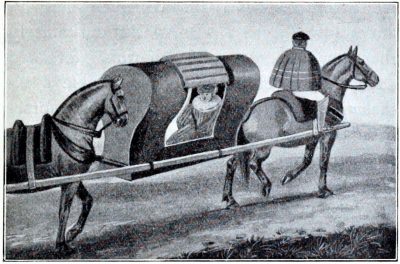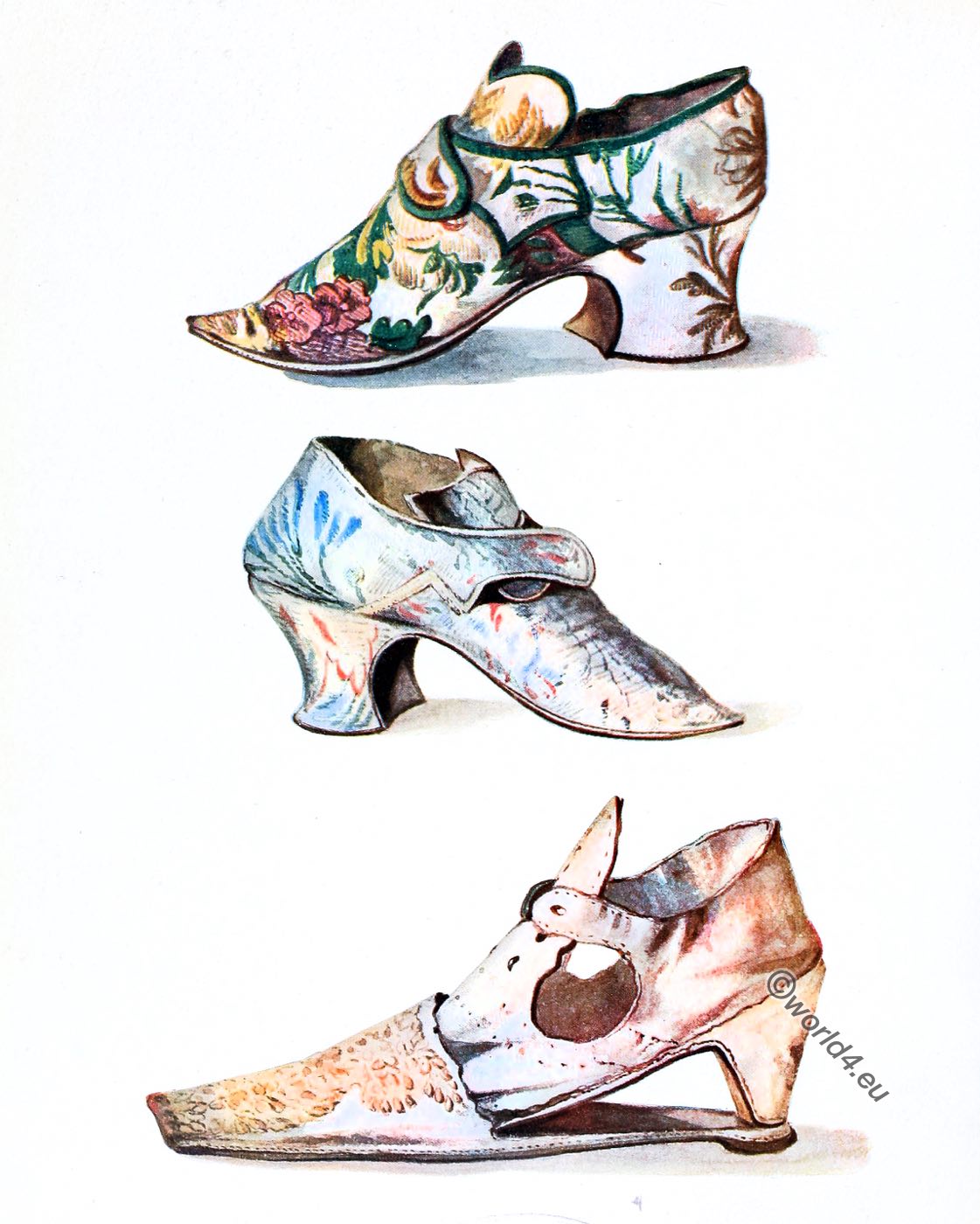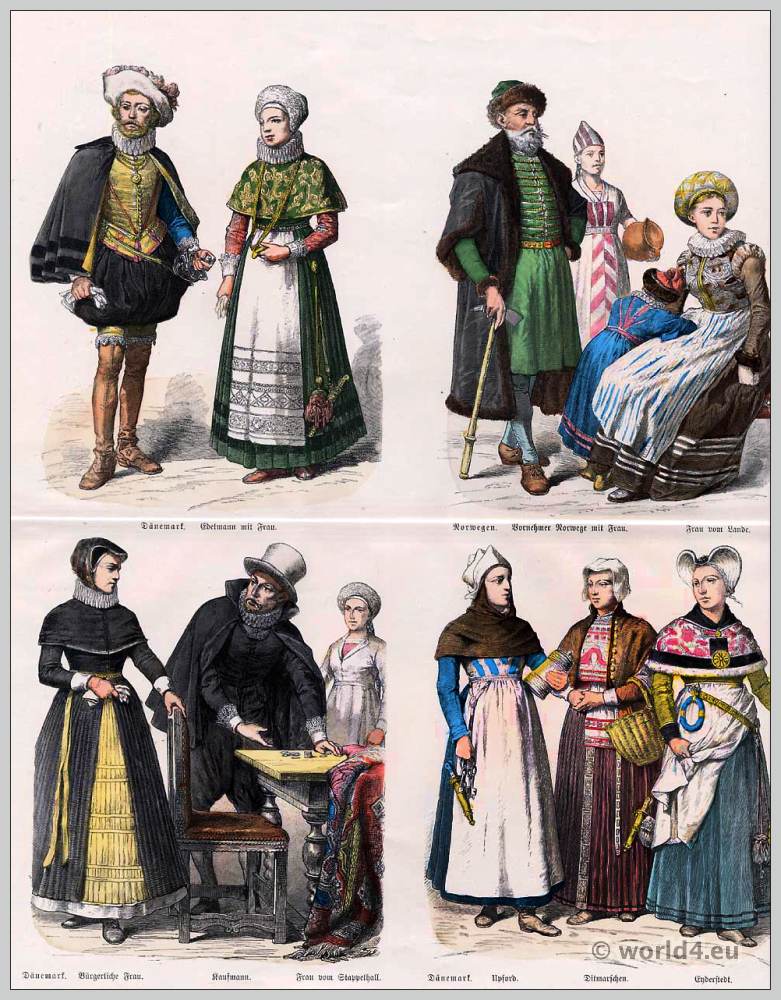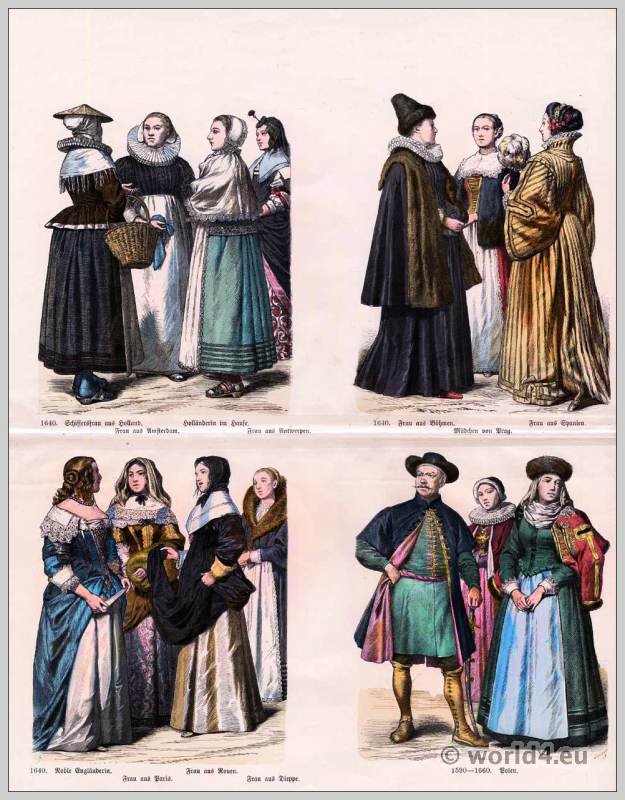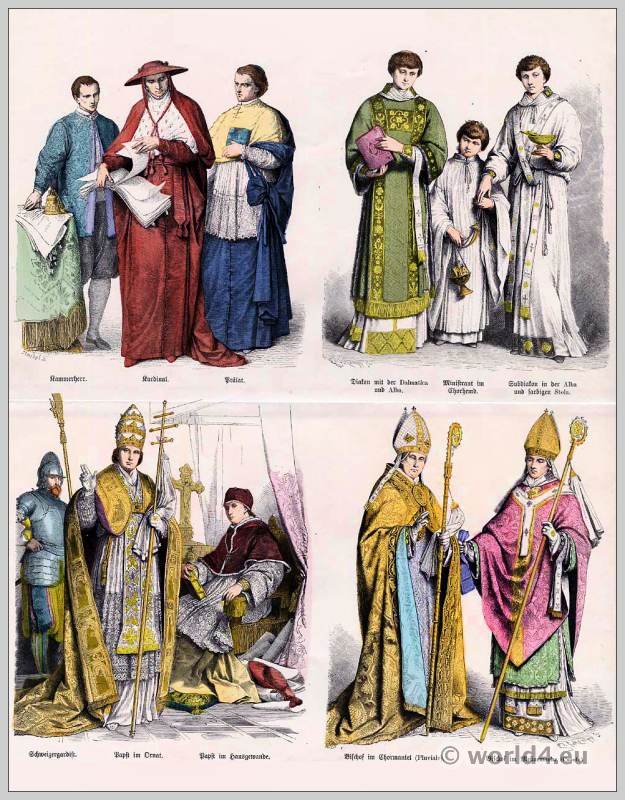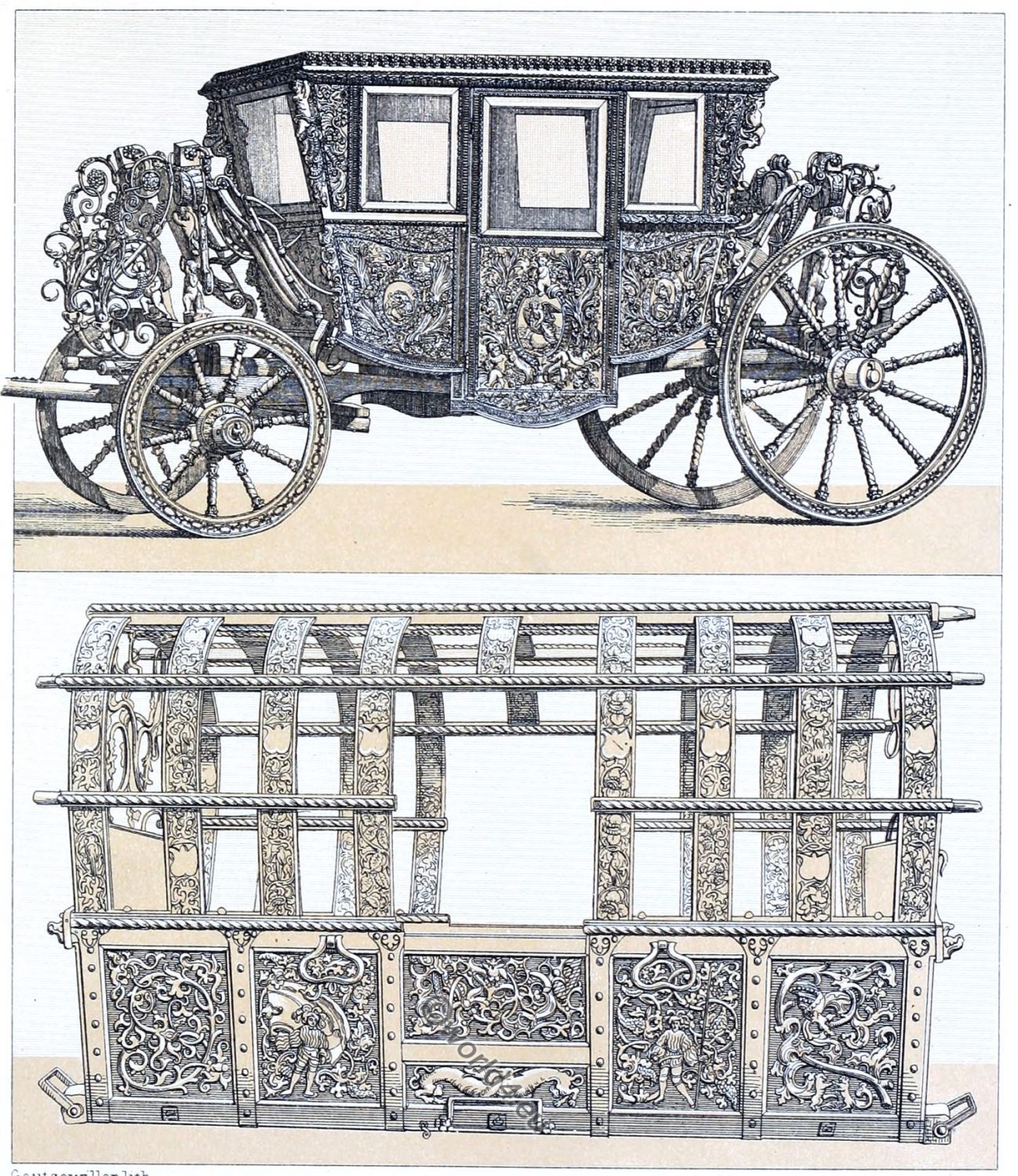
EUROPA. 16TH AND 17TH CENTURIES. TRANSPORTATION. THE CAROSSES.
During the Middle Ages, women and clergymen travelled mainly in palanquins; the bad roads or lack of them made this type of transport indispensable for weak or sick persons. There were also trolleys, but these were usually covered carts with four equally sized wheels.
The car body rested without straps and springs on two parallel, immobile axles. The horses were tensed on both sides of a straight drawbar. The movement of these vehicles was a very tedious one, and if you wanted to turn, you had to make a wide turn long before.
One got into the cart from behind. The same was spanned by tires, which were connected by cross belts. Over these the tarpaulin was laid to protect against sun and rain. The interior was made as comfortable as possible with thick blankets and fabrics.
The carts were built for two or four people, but could be enlarged as needed for the use of a larger number of travellers; they then represented the service of the great country carriages of the XVII and XVIII centuries.
The covering of these carriages consisted of leather with openings on the side. The roof of the carriages was made of fabric, which could be folded apart at will. The draught horses were steered by a postillion that sat on the drawbar horse as soon as two horses were enough. If several horses were necessary, the same ones were led by servants on foot by hand.
At the beginning of the 16th century, side entrances and a step were added between the wheels. Later in the century, the belts in which the car body hung were also used to reduce the vibration. In France, these carriages were called chars branlants (carriages hanging on belts) or swaying carriages.
Our plate shows below the body of such a car, which was hanging in straps. The same was used for the wedding of John Frederick I, Elector of Saxony called Johann the Magnanimous (1503-1554) and Sibylle of Cleve (1512–1554) in 1527 and is located in Coburg. It is entirely made of gilded wood, except for the painted coats of arms.
The front and rear of the wagon are closed by a finely wrought iron latticework so that you can see through. Also the tires are very finely decorated. The actual car body is about two meters long. The foliage still shows the gothic character, while the figures already bear the stamp of the Renaissance. The body above is in the coach houses of the Royal Palace in Madrid. It dates from the middle of the XVIIth century.
The encyclopaedia of the 18th century gives the following definition of the coach; “It is a comfortable and sometimes even very pompous carriage, which hangs in strong leather straps and stands on wheels with whose help it moves. In France and throughout the rest of Europe, carriages are drawn by horses, except in Spain, where mules are used. The coachman usually sits in the front on a raised seat.” The carriages, the encyclopedia continues, are a French invention.
Since Louis XIII their number has increased considerably. Luxury laws were sometimes issued to control the excessive splendour of these carriages, which were used by the rich bourgeoisie as well as by the distinguished gentlemen; but the supervision of these regulations was a very casual one.
The wooden parts of the carriage shown are richly carved and gilded. The hanging straps are sewn through, the interior is lined with velvet and the doors are decorated with polished Venetian mirror glass. The front wheels are considerably smaller than the rear wheels. The spiral shaped wheel spokes are characteristic of the end of the reign of Louis XIII or the beginning of the era of Louis XIV. The drawbar in the middle allows two horses to be drawn.
From photographs.
Source: History of the costume in chronological development by Auguste Racinet. Edited by Adolf Rosenberg. Berlin 1888.
COACHES IN FRANCE.
By way of showing how the old authorities differ, mention may be made of the coach which Henry Fitzalan, Earl of Arundel, brought from France and presented to the Queen, it is said, in 1580. This vehicle is cited as the first coach ever seen in public! but inasmuch as we have ample evidence to prove the last statement incorrect, apart from the fact that the Earl died in 1579, nothing more need be said about it.
France does not seem to have been very far ahead of Britain in the adoption of coaches. In 1550 there were only three in Paris; one belonged to the Queen of Francis I., another to Diana of Poitiers, and the third to Rene de Laval, who was so corpulent that he could not ride. Mr. George Thrupp, in his History of the Art of Coach Building (1876), observes that “there must have been many other vehicles in France, but it seems only three covered and suspended coaches.”
CONTINENTAL CARRIAGES IN THE 13TH AND 14TH CENTURIES.
Carriages were in use on the continent long before they were employed in England. In 1294. Philip the Fair of France issued an edict whose aim was the suppression of luxury; under this ordinance the wives of citizens were forbidden to use carriages, and the prohibition appears to have been rigorously enforced. They were used in Flanders during the first half of the 14th century; an ancient Flemish chronicle in the British Museum (Royal MSS. 16, F. III.) contains a picture of the flight of Ermengarde, wife of Salvard, Lord of Rouissillon. She is attended by a female and in the front of the cart is placed her fool.
The lady is seated on the floor boards of a springless four-wheeled cart or waggon, covered in with a tilt that could be raised or drawn aside; the body of the vehicle is of carved wood and the outer edges of the wheels are painted grey to represent iron tires. The conveyance is drawn by two horses driven by a postillion who bestrides that on the near side. The traces are apparently of rope, and the outer trace of the postillion’s horse is represented as passing under the saddle girth, a length of leather (?) being let in for the purpose; the traces are attached to swingle-bars carried on the end of a cross piece secured to the base of the pole where it meets the body.
Carriages of some kind appear also to have been used by men of rank when travelling on the continent. The Expeditions to Prussia and the Holy Land of Henry, Earl of Derby, in 1390 and 1392-3 (Camden Society’s Publications, 1894), indicate that the Earl, afterwards King Henry IV. of England, travelled on wheels at least part of the way through Austria.
The accounts kept by his Treasurer during the journey contain several entries relative to carriages; thus on November 14, 1392, payment is made for the expenses of two equerries named Hethcote and Mansel, who were left for one night at St. Michael, between Leoban and Kniltelfeld, with thirteen carriage horses. On the following day the route lay over such rugged and mountainous country that the carriage wheels were broken despite the liberal use of grease; and at last the narrowness of the way obliged the Earl to exchange his own carriage for two smaller ones better suited to the paths of the district.
The Treasurer also records the sale of an old carriage at Friola for three florins. The exchange of the Earls “own carriage” is the significant entry: it seems very unlikely that a noble of his rank would have travelled so lightly that a single cart would contain his own luggage and that of his personal retinue; and it is also unlikely that he used one baggage cart of his own. The record points directly to the conclusion that the carriages were passenger vehicles used by the Earl himself.
Source: Early carriages and roads by Sir Walter Gilbey. London: Vinton & Co., Ltd. 1903.
Related
Discover more from World4 Costume Culture History
Subscribe to get the latest posts sent to your email.

